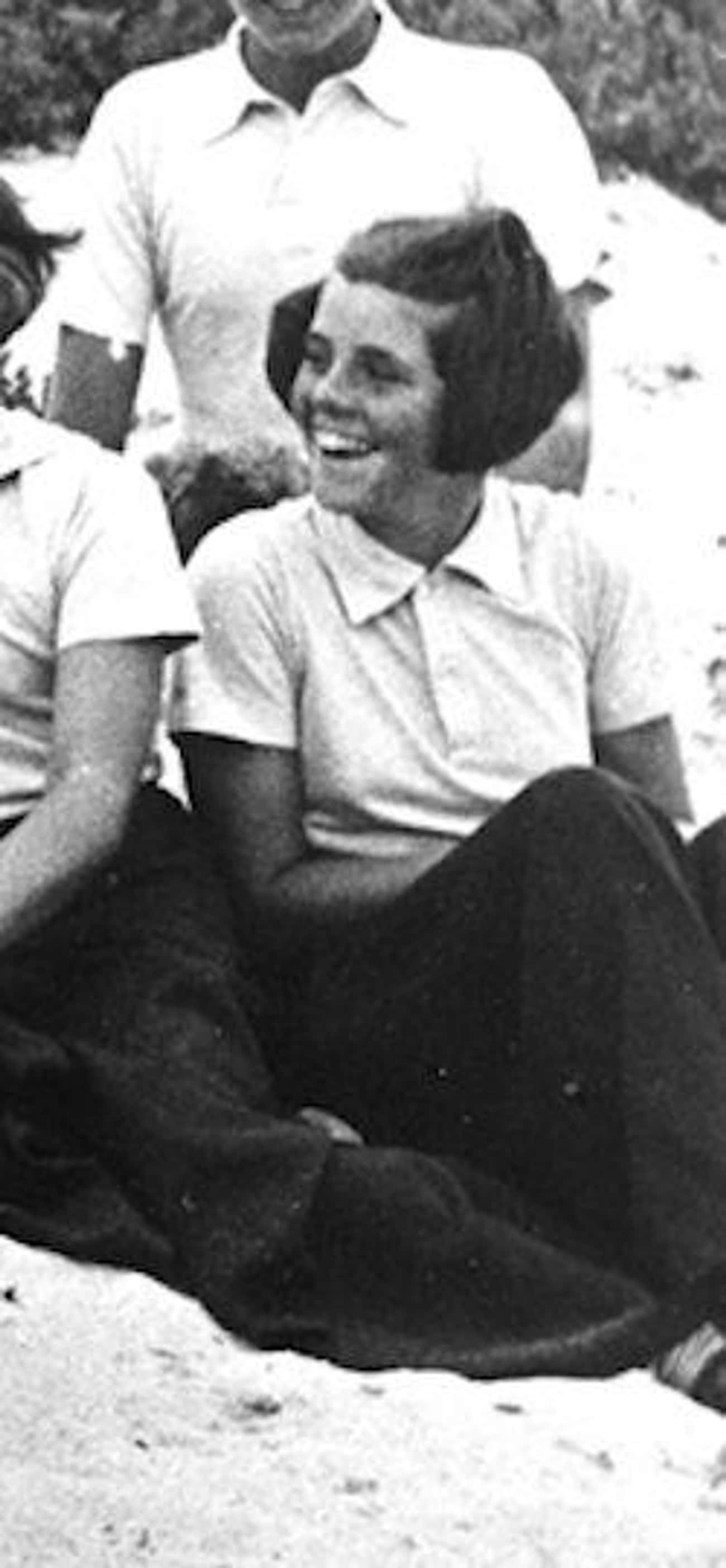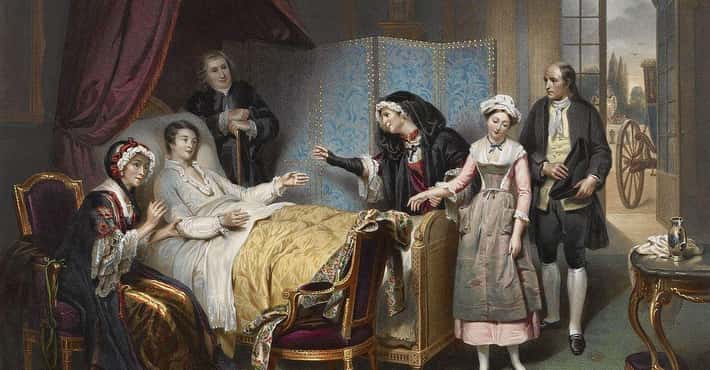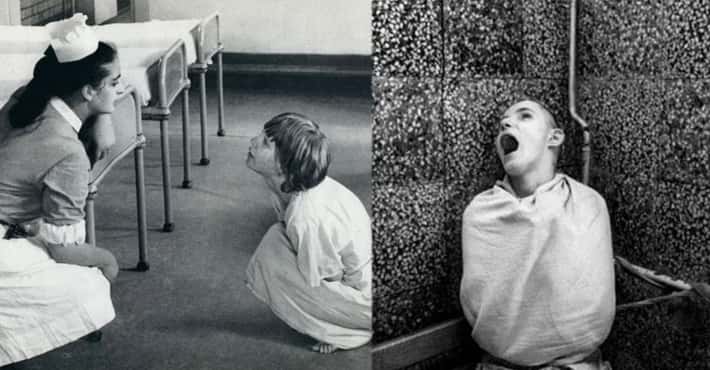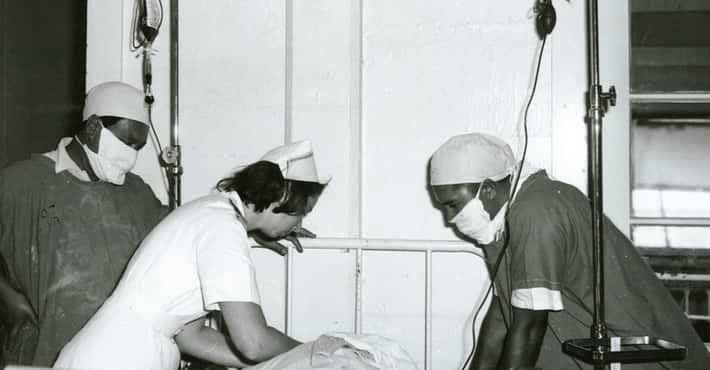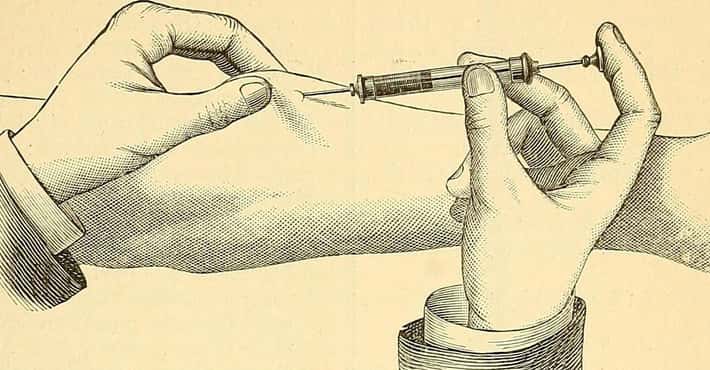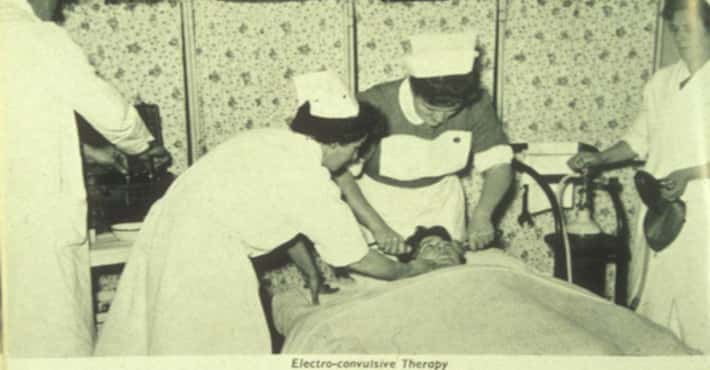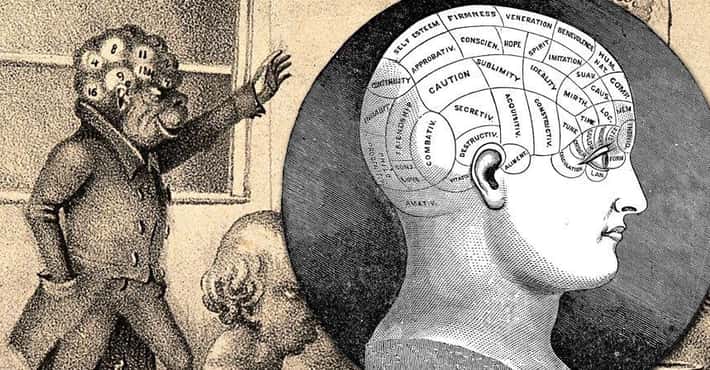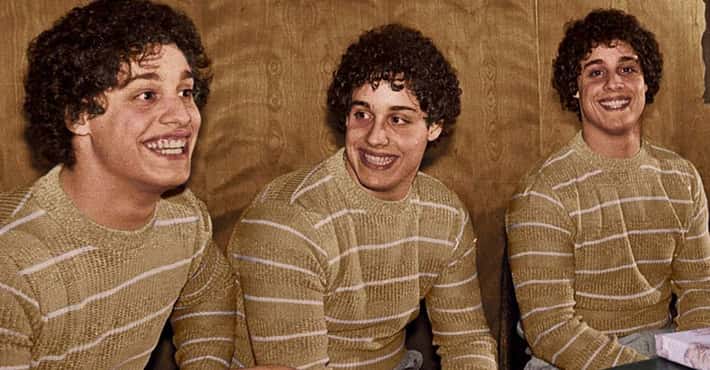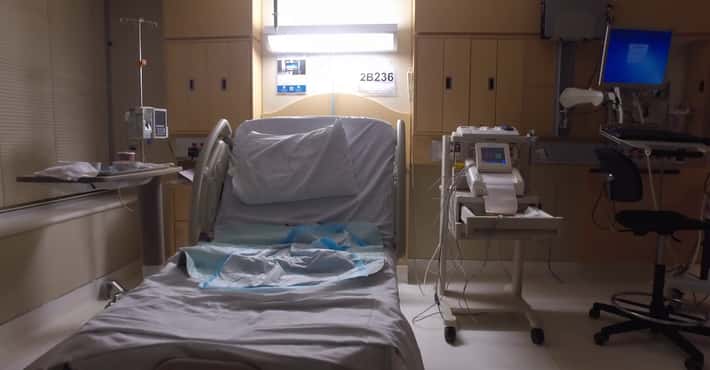12 Twisted Before & After Stories Of Lobotomy Victims
Rosemary Kennedy
Photo: Richard Sears / Wikimedia Commons / Public DomainWhen Rosemary Kennedy was born, the medical community was still decades away from understanding dyslexia and other learning disabilities. The little sister of John F. Kennedy, Rosemary was misunderstood by her parents who struggled with her deficient cognitive skills.
Her father, Joe Kennedy, consulted the Psychology Department at Harvard University, where doctors evaluated Rosemary and concluded that she was developmentally disabled. Her father consented to his daughter's frontal lobotomy when she was 23 years old. It was thought he was afraid his daughter might embarrass him and his son and hurt their chances in politics. She erupted into aggressive tantrums when she didn't get what she wanted.
In November 1941, Dr. Walter Freeman performed the surgery with Dr. James Watts, and they sliced away at the young woman's frontal lobe until the left side of her body was partially paralyzed.
After the surgery Rosemary was sent off to a mental institution where she had to relearn how to brush her teeth, walk, and dress herself. The bubbly and sometimes volcanically angry young woman was replaced with someone who was unable to talk.
In 2018, People published never-before-seen letters from Rosemary before she was lobotomized. The letters were addressed to her caretaker, Dorothy Smyth, an Irish woman who cared for Rosemary for a month-long period when she was 20. Rosemary recounted her adventures in Europe to Smyth, and she ended her letters with sign-offs like "Best Love from your darling Sweetheart."
Rose Williams
The older sister of Tennessee Williams, Rose was schizophrenic and described by her playwright brother as one of the sweetest, most genuine people he ever knew. In his memoirs, Williams notes that when Rose would go on a date, she “would talk with an almost hysterical animation which few young men knew how to take.”
In 1926, Rose wrote a letter to her grandmother describing her depression:
I don’t know what was the matter with me except that I was so nervous that I couldn’t hold the glass to take my medicine in. I stayed in bed all day long and had a big dose of calomel and I feel better but still weak. I just had finished a music lesson, and Miss Butell nearly drove me wild. It makes me nervous as a cat.
By 1943, Rose was beginning to lash out during manic episodes and agreed to undergo a frontal lobotomy. The surgery seemed to reduce Rose to a nearly catatonic state. She remained institutionalized, albeit in a swanky institution thanks to her brother's fortune. In a post-surgery letter she wrote to Tennessee, she said, "I want some black coffee, ice-cream on a chocolate bar, a good picture of you, Your devoted sister, Xxx Rose. P.S. Send me one 1 dollar for ice cream.”
Alys Robi
Photo: Conrad Poirier / Wikimedia Commons / Public DomainAlys Robi was once described as "Canada's answer to the renowned Latin singer and dancer, Carmen Miranda" because of her high-voltage renditions of Tico Tico, Besame Mucho, and You Belong to My Heart. Her obituary describes her as being an alluring, temperamental woman with magnetic eyes, but in 1952, she was sent to a mental institution following a car accident that left her mentally scarred and sent her into wild mood swings. Robi then received an alleged unwanted lobotomy.
After five years in the institution, Robi was released and actually credited the lobotomy with her new, calm demeanor.
H.M.
A young man only known by the initials "H.M." was hit by a cyclist and cracked his skull. From that injury, he began suffering seizures that lasted for around 40 seconds at a time. H.M. sought out Dr. William Scoville, a man who was experimenting with “fractional” lobotomies, which eliminated less tissue and supposedly allowed patients to keep their original personalities.
On September 1, 1953, Scoville used a hand crank and drill saw from a local hardware store to remove a bottle cap’s worth of bone from above each one of H.M.'s eyes. He then removed a few key parts of H.M.'s brain. After the surgery, H.M. only suffered about two seizures a year (a vast improvement), and his IQ jumped from 104 to 117, but he couldn't form any new memories.
H.M. was forced to move back in with his parents where he performed odd jobs, despite having to ask multiple times what it was he was doing. It was later discovered that due to the loss of his hippocampus, H.M.'s brain began to understand time differently. According to Sam Kean: "Five minutes lasted, subjectively, just 40 seconds for him; one hour lasted three minutes; one day 15 minutes."
H.M. passed in a nursing facility at the age of 82 from respiratory failure, and his brain was removed immediately following his passing. H.M.'s brain was shaved into 2,401 slices, each of which was mounted on a glass plate and photographed at 20x magnification to form a digital, zoomable map down to the level of individual neurons.
Ellen Ionesco
Video: YouTube
Ellen Ionesco was the reportedly the first person to receive a transorbital lobotomy - a surgery where an icepick (or something pick-like) is forced through the back of the eye sockets to pierce the thin bone that separates the eye sockets from the frontal lobe.
Prior to her surgery, Ionesco was described by her daughter as "violently suicidal." But after the lobotomy, performed in 1946, the storm clouds seemed to evaporate. Her mother described, "it was just peace...it was like a coin turning over. That quick. Whatever he did, he did something right." Although her personality might have been a bit more muted than before, she was relieved of her depression.
Anita McGee
Photo: Wellcome Images / Wikimedia Commons / CC BY 4.0Dr. Walter Freeman also lobotomized Anita McGee, who suffered from postpartum depression, in 1953. Unfortunately, the procedure left her institutionalized for the rest of her life.
Her daughter has said, "I personally think that something in Dr. Freeman wanted to be able to conquer people and take away who they were."
Josef Hassid
Video: YouTube
This Polish violinist was one of the most gifted classical musicians of the early 20th century, but he suffered from schizophrenia. Doctors recommended a prefrontal lobotomy, which he underwent in 1950.
Shortly afterward, he developed a postoperative infection that progressed into meningitis. He passed weeks after the procedure at the age of 26.
- Photo: Sailorsoul2846 / Wikimedia Commons / CC BY-SA 3.0
In the 1980s, Reagan Youth bashed out an intense, politically charged form of hardcore that managed to tow the line between brilliant dumbed-down circle pit anthems and trenchant critiques of the racist punk scene that was bubbling over throughout the decade. Unfortunately, the band's singer, Dave Rubinstein, had a nasty heroin habit and also got into a fight that left him with a head injury. Doctors informed him that he required lobotomy in order to recover.
After the surgery, Rubinstein technically recovered, but he was never again the punk rock intellectual that he was while fronting Reagan Youth. He quit singing with the band and threw himself completely into his addiction. In 1993, he took his own life after his girlfriend, Tiffany Bresciani, was murdered by the serial killer Joel Rifkin.
Genevieve Pilarski
In 1944, Gennie Pilarski was admitted to a state psychiatric facility known as the Manteno State Hospital in Manteno, IL, after she and her parents had a disagreement about where she should live post-college. When she was admitted to the facility, a doctor described her as "neat, clean, tidy. Extremely quiet but friendly and agreeable. Cooperative in ward and routine." He even noted that there were "no signs of active pathology."
For some reason, instead of releasing Gennie on her own recognizance, the hospital staff subjected her to hydrotherapy, repeatedly plunging her into and out of ice water. Afterward, she asked: "Is life a farce?"
By May 1953, Gennie had undergone 187 electric shock therapies (two a week) and on February 18, 1955, she was subjected to an "extensive neurosurgery with bilateral extirpation of most of frontal and temporal lobes." This unnecessary surgery left Gennie "mute, [and] totally dependent on commands for functioning of everything from toilet urges on up."
None of this was reported to anyone, and for the next 45 years, she was shuffled between nursing homes and mental wards until she passed in 1998 at the age of 79.
Patricia Moen
According to Patricia, after being married to her husband for 13 years, she suddenly started crying constantly in 1962 at the age of 36. She told NPR, "I just mentally was no good," and one night while she was home alone, she took an entire bottle of pills in a last-ditch suicide attempt. That's when Dr. Walter Freeman suggested that she get a lobotomy, although he did warn her that there was a possibility that she would end up catatonic. According to Patricia, even though she couldn't remember the surgery or her time at the hospital, she did feel different after the doctor tinkered with her brain.
"I was a more free person after I'd had it. Just not to be so concerned about things... I just, I went home and started living, I guess is the best I can say - just started living again and was able to get back into taking care of things and cooking and shopping and that kind of thing..."
Howard Dully
Photo: Lonegunmen / Wikimedia Commons / Public DomainAs a 12-year-old boy, Howard Dully was described as defiant and "savage-looking." His doctor's notes on him at the time reveal a preteen with some mental issues who seems like he's trying to test his boundaries with his father and stepmother. From Dr. Walter Freeman's notes: "He doesn't react either to love or to punishment. He objects to going to bed but then sleeps well. He does a good deal of daydreaming and when asked about it he says 'I don't know.' He turns the room's lights on when there is broad sunlight outside."
In December 1960, Dr. Freeman performed a lobotomy on Dully and his entire nature seemed to change. Dully's stepmother noted that he "[sat] quietly, grinning most of the time and offering nothing."
It took Dully decades to understand what happened to him, and he still suffers from memory loss, but he feels like he's missing something. "Walter Freeman's operation was supposed to relieve suffering. In my case it did just the opposite. Ever since my lobotomy I've felt like a freak, ashamed," he said.
- Photo: Darrin Antrobus / Wikimedia Commons / CC BY-SA 2.0
Born in 1928, the Earl of Galloway was a slightly eccentric child who was eventually diagnosed with schizophrenia. When he turned 23, his parents took the unsuspecting Earl to a hospital in London where he was lobotomized. After the surgery, Stewart spent the next 15 years in the mental wing of the Crichton Royal Infirmary; then in 1970, his parents placed him in the Monastery of the Transfiguration in Roslin.
After finally leaving the monastery and marrying a commoner and shop girl, he said, "I was never the same again," referring to the lobotomy.


